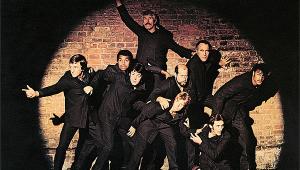Room Treatments
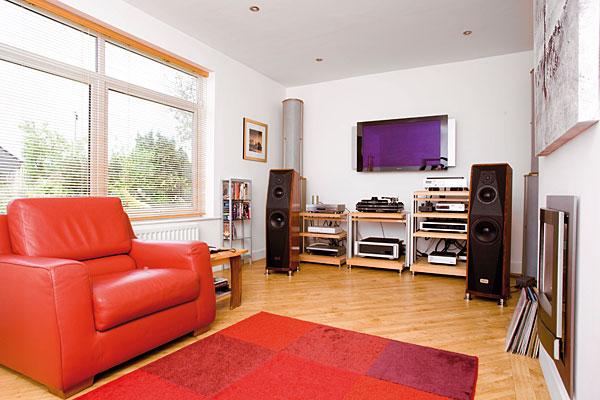
Most of us will have asked ourselves at some point whether our next upgrade should be not to our hi-fi system but rather to the room we use it in. Could £1000 spent on absorbents and diffusers make a more profound difference to sound quality than spending the same amount on, say, a cable upgrade or a new pick-up cartridge?
It's a question that can't be answered definitively as each listening room and each system is different. What I propose to do here is not attempt to persuade you to spend your money this way. But should it prove necessary, or if you're just determined to give it a try, I'll offer advice on what to buy and – most importantly of all – where to place it in the room.
This advice presumes that you'll 'suck it and see' rather than just take my word for it, and it's never a bad idea to have a 'dispassionate other' – spouse, friend, whoever – on hand to prevent hopes and assumptions leading you astray.
A Second Opinion
When I first experimented with room absorbents in the early 1980s, I was so convinced that quelling the first side wall reflection from the loudspeakers must be a good thing that I placed the 50mm acoustic foam I'd bought in the appropriate positions and invited a friend around to hear the improvement. He said: 'It sounded better before' – and when the foam was removed, I had to admit he was right. The moral of the story: don't let expectations mislead you. And don't let me mislead you either. What follows here are intended as words to the wise, not rules for blind adherence.
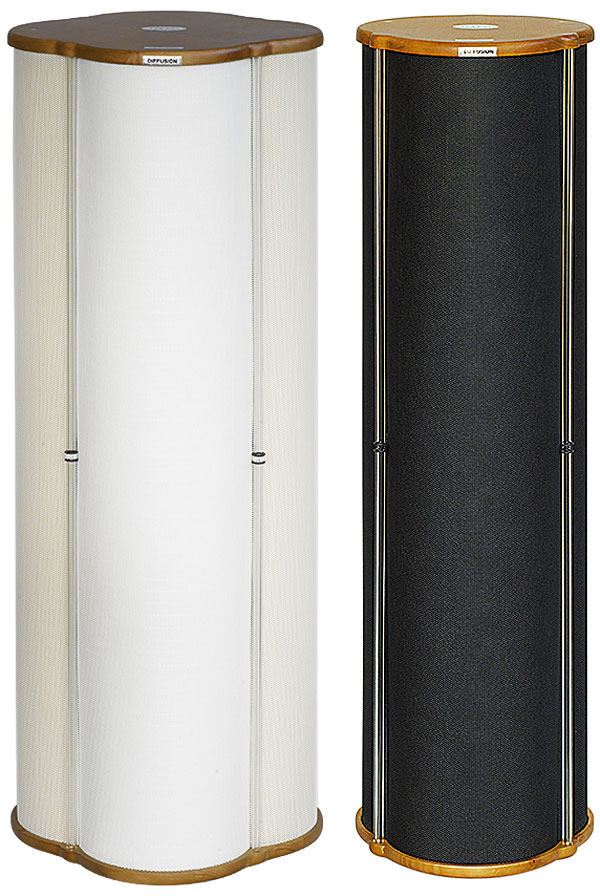
At some point in the fairly recent history of the audio industry it became received wisdom that the last great barrier to true high fidelity is the listening room. It's not an opinion I enthusiastically endorse, for three principal reasons:
1) It is an old, careless habit to blame the room for what are system issues. Improve the system and, as if by magic, 'room problems' will often disappear.
2) Some of the very worst rooms I've heard for reproducing music have been designed by acousticians, usually because over-use of absorbents results in a dry, lacklustre, unengaging sound.
3) Most music, live or reproduced, sounds better indoors than out – which you won't need telling if you've ever used speakers outdoors or been to an open-air concert. It's remarkable how gutless a full symphony orchestra sounds when it doesn't have a hall to support it.
This doesn't mean, of course, that listening rooms are blameless. Some things they do are indeed bad, but others – because of the way we perceive sound in reverberant spaces – are good. So an adversarial approach to room acoustics is misguided. A more sensible mindset is to work with the room rather than against it, to exploit its positive effects while, so far as possible, suppressing its negative ones.
Room Effects
The first essential is to understand what rooms 'do' to sound. Rooms have the effects they do because they prevent sound escaping them. Instead it reflects from the walls, ceiling and floor, dissipating energy progressively due to absorption. Some of this absorption takes place within the air itself – it may surprise you to know that the 60m3 of air in a 5x4x3m room weighs about 72kg at 20oC – but most of it occurs within the room's soft furnishings. At low frequencies, a suspended floor, partition wall and large panes of glass can act as absorbers too.
Fig 1 shows a highly stylised representation of a room impulse response (RIR). The exact form of the RIR depends on where in the room it is measured, and where in the room the impulse source is placed. (Not that, in practice, impulse signals are used to measure RIRs. The energy in an impulse is so low that multiple impulses must be averaged to achieve an acceptable signal-to-noise ratio. Normally, measurements are made using periodic noise or swept sine signals, with the results post-processed to generate the RIR.)
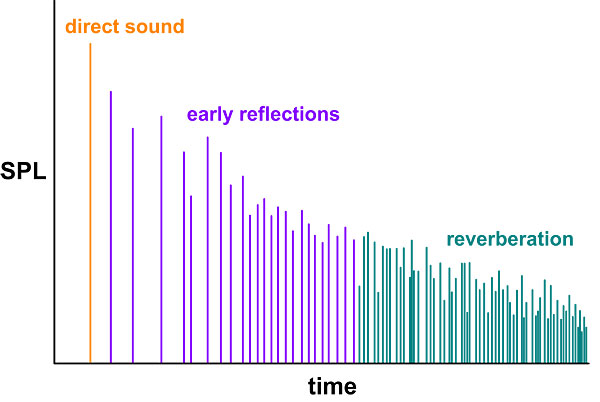
The reflections which arrive immediately after the direct sound are termed early reflections and have special status. They are not usually perceived as separate from the direct sound but are perceptually 'fused' with it as part of what is known as the precedence effect, which gives perceptual prominence to the direct sound, thereby allowing us to localise the sound source despite what would otherwise be the confusing effect of the reflections. Despite this fusion – which on complex signals like music can encompass reflections arriving up to 80ms after the direct sound – early reflections can still have important effects on perceived tonal balance and stereo imaging, and on intelligibility. How early reflections are handled within a listening room is very important to sound quality.
Critical Distance
Less important is the reverberant 'tail' of the RIR, although if the room's reverberation time is too long it too can affect intelligibility. Depending on listening distance, it can also have significant effect on perceived tonal balance. In the US in particular, historically many designers paid at least as much attention to a loudspeaker's power response (ie, its frequency response integrated over all angles) as to its on-axis pressure response because at long listening distances in large rooms you listen in the reverberant field, in which reverberant sound dominates the direct sound. The transition occurs at what's termed the critical distance, where the direct sound and reverberant sound are equal in level. Highly reverberant spaces result in short critical distances, acoustically 'dead' spaces in long critical distances.
Because the soft furnishings in a room are usually more effective at absorbing high frequencies (HF) than low frequencies (LF), the reverberation time in a typical domestic room is itself frequency dependent, being longer at LF than at HF. Fig 2, which shows the results of reverberation time (RT) versus frequency measurements made at octave intervals from 125Hz to 8kHz in 50 British rooms in the early 1970s, confirms this. The central trace [black] shows the mean reverberation time obtained, and the upper and lower traces [red] the maximum and minimum RTs measured respectively. Some increase in RT with reducing frequency is acceptable. Typical guidelines for listening rooms are a reverberation time of between 0.2 and 0.4 seconds (200-400msec) at all frequencies.
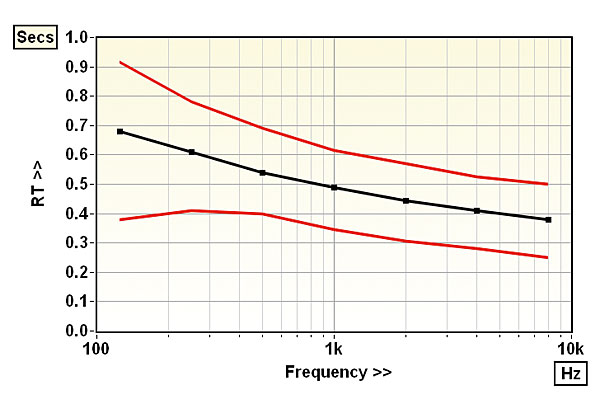
Rule Of Thirds
The other major room effect is resonance within the enclosed volume of air, caused by constructive interference between successive reflections between a pair or larger number of room boundaries. This subject was covered in detail in my recent Investigation into subwoofer placement [HFN Feb '19] so suffice to say that room resonances (aka modes) are a particular problem at LF and in the lower midrange where, as already described, there is usually little effective sound absorption to control them. This means that they have to be tackled primarily by adjusting loudspeaker and listening positions, although corner absorbers may help in extremis.

